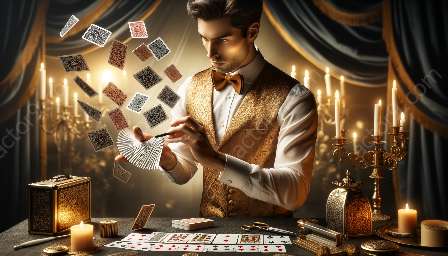Have you ever been captivated by a magician's illusions or amazed by the art of sleight of hand? This article delves into the fascinating world of psychological principles behind these captivating performances.
The Intriguing World of Magic and Illusion
Magic and illusion have long been sources of fascination for humans. From ancient times to modern-day entertainment, the ability to deceive and entertain through magical performances has captured the imagination of people worldwide.
At the heart of these performances lies the intricate interplay between psychology and perception. Magicians and illusionists leverage a deep understanding of psychological principles to astound their audiences and create experiences that seem impossible.
Understanding Perception and Attention
One of the fundamental psychological principles behind sleight of hand and magic is the manipulation of perception and attention. Magicians skillfully direct the audience's attention to specific areas while diverting it from others. This manipulation plays on the inherent limitations of human attention and perception, creating an environment where the unexpected becomes possible.
Through the art of misdirection and misattribution, magicians exploit the brain's natural tendencies to fill in gaps and make assumptions, leading to a sense of wonder and amazement. These techniques showcase the incredible susceptibility of human perception to subtle manipulation.
The Power of Confirmation Bias
Magicians also harness the psychological concept known as confirmation bias, where individuals tend to seek, interpret, and remember information that confirms their preexisting beliefs or expectations. By understanding this principle, magicians can guide the audience's focus towards predetermined outcomes, thereby shaping their perception of the performance.
By subtly leading the audience to confirm the expected outcome, magicians create an illusion of impossibility, leaving spectators questioning the very fabric of their reality. This skillful manipulation of confirmation bias adds layers of complexity to the art of magic and illusion.
The Psychology of Pattern Recognition
Humans are wired to seek patterns and make associations as a fundamental aspect of cognition. Magicians capitalize on this innate tendency by introducing patterns and disruptions, leading to moments of surprise and disbelief.
Through the clever use of patter, timing, and choreography, magicians create an illusion of inevitability, exploiting the brain's inclination to seek order and logic. This psychological phenomenon underpins the awe-inspiring nature of magic and deception.
The Influence of Emotion and Memory
Emotion and memory play pivotal roles in the art of magic and illusion. Magicians often incorporate emotional elements into their performances, capitalizing on the psychological impact of heightened emotions on memory formation. By evoking strong emotional responses, magicians can enhance the audience's receptivity to suggestion and misdirection, further heightening the sense of wonder and disbelief.
Conclusion
The psychological principles behind sleight of hand, magic, and illusion are deeply intertwined with the intricacies of human perception, cognition, and emotion. By understanding and leveraging these principles, magicians and illusionists create captivating experiences that transcend the boundaries of reality, leaving audiences spellbound and in awe of the seemingly impossible.


















